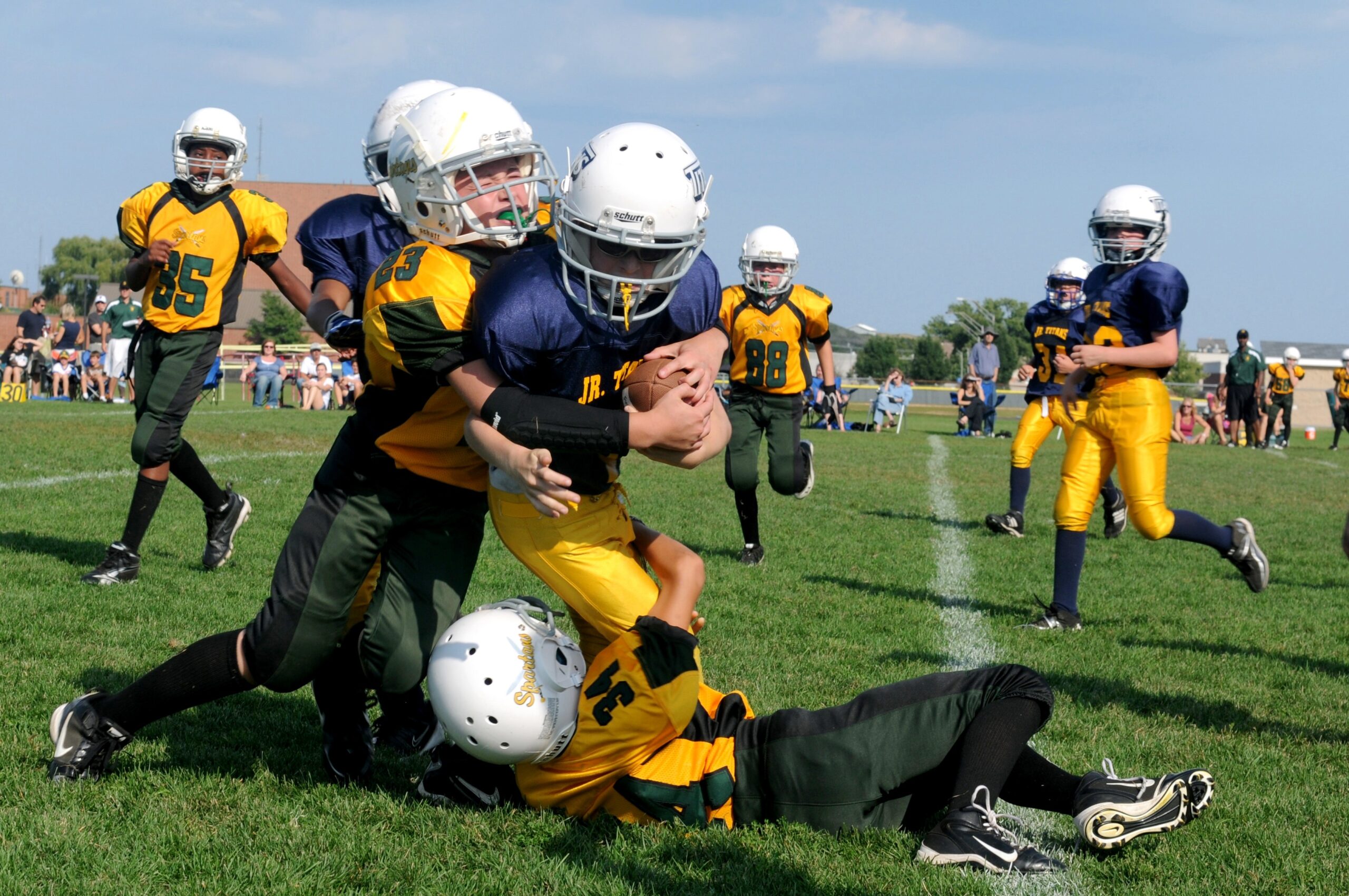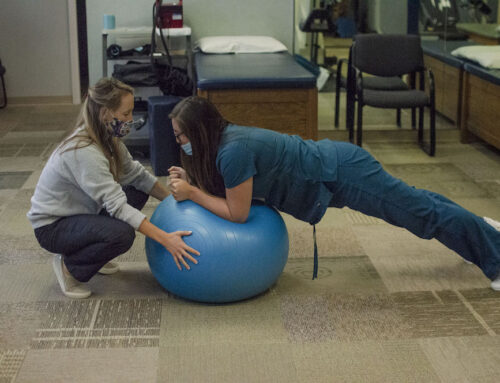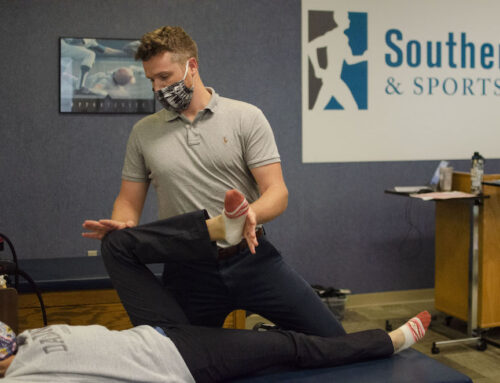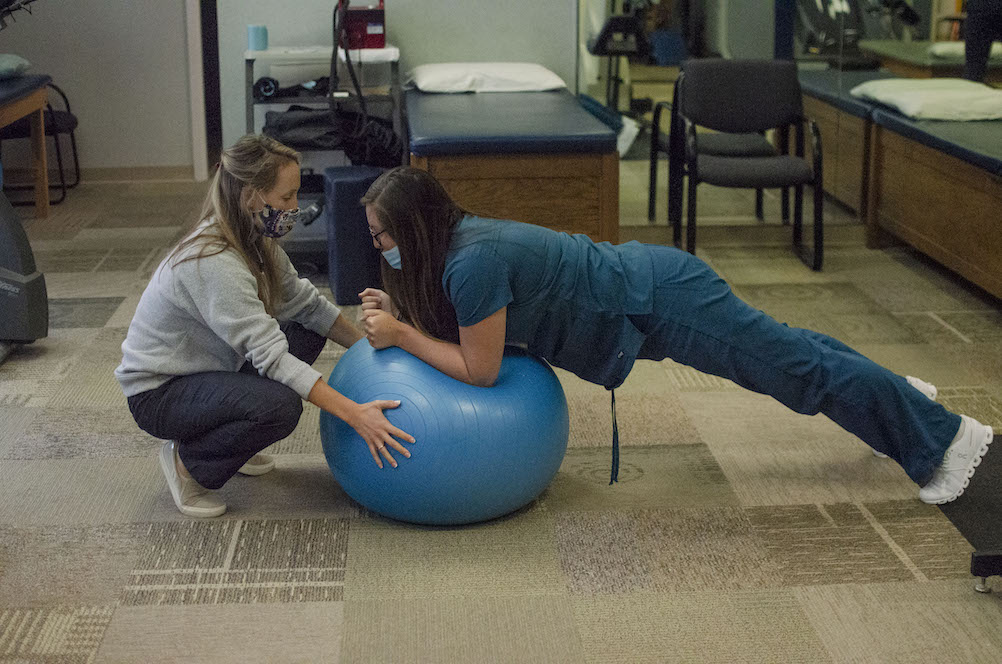With football season kicking into gear, head injuries – both diagnosed and undiagnosed – are on the rise. An estimated 1.6-3.8 million individuals experience concussions each year, with the largest percentage of injuries occurring in American football. Although statistics reveal a higher incidence in college athletes, this can be attributed to college athletes’ direct access to medical professionals who are diagnosing and reporting the concussions, rather than an actual increased likelihood of injury in college sports as compared to high school.
All concussions, regardless of severity, are considered traumatic brain injuries and should be addressed and treated appropriately and immediately—starting at the sidelines and continuing in the clinic. So, where does Physical Therapy come in? First, let’s nail down the definition of a concussion.
What is a Concussion?
A concussion, by definition, is a brain injury resulting from shaking or hitting of the head resulting in violent contact of the brain with the sides of the skull. Concussion symptoms vary but may include emotional, physical, and cognitive symptoms that may not present until long after the initial injury. Symptoms may include headache, dizziness, nausea, loss of balance or coordination, fatigue, vision changes, sensitivity to light and sound, irritability, and difficulty concentrating.
Loss of consciousness is only one of the many markers for concussions, as less than 10% of individuals suffering from this type of injury will actually experience decreased consciousness at or after the time of the injury.
Concussions often occur in conjunction with neck, shoulder, and soft tissue damage which may also be addressed by your physical therapist to decrease pain and improve function. If additional brain injury occurs (i.e., a second hit to the head) before full healing occurs, second-impact syndrome may occur. Research indicates that second-impact syndrome, while almost entirely preventable, results in a 100% chance for permanent brain damage with a 50% chance of death.
How are Concussions Diagnosed?
Although there is not one specific catch-all test for concussion diagnosis, a physical therapist can determine if a concussion occurred by performing various cognitive, physical, and neurological tests that can be recorded and monitored during treatment.
Tolerance to a certain activity, such as a treadmill test, may be performed to determine symptom onset and prepare the individual to safely return to sports. If pre-season cognitive baseline tests are available, post-traumatic cognitive performance can be compared to the baseline for diagnosis.
Multiple in-clinic, hands-on maneuvers may be used to minimize double-vision and dizziness associated with vertigo onset after a concussion. Repeating the tests over the course of treatment can indicate progress or a continued concussion-state that would indicate a lack of full healing and increased risk of second-impact syndrome.
How Can Physical Therapy Make a Difference?
A physical therapist’s expertise is key in accurately determining the next best steps to allow healing and assess the ability to return to sports. Based on symptoms and severity of the injury, a physical therapist can recommend rest and recovery times, safely restore muscle strength, coordination, balance, and function, decrease dizziness, decrease headaches, and provide safe instruction and guidance for return to sport.
Having this supervision and guidance is crucial for brain injuries as the symptoms are not always visible or noticeable to the patient, and individuals often return to sport before full healing is achieved resulting in a significantly increased risk for permanent damage. Consulting with a physical therapist post-injury can ensure that healing is complete and the athlete is ready and able to safely return to sport.
Although concussions are hard to identify and monitor for the average person, a concussion is a true injury and should be taken very seriously. Physical therapists are thoroughly trained in recognizing the symptoms and progression of a concussion and are here to help ensure that athletes return safely to the game.
Have questions about concussions? Give us a call at 706-845-9383.









